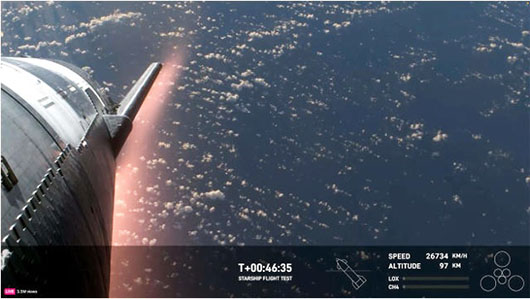Special to CosmicTribune.com, March 20, 2024
Geostrategy-Direct
By Richard Fisher
On March 14, the world’s largest man-made flying platform, the 5,000-ton SpaceX Starship, made its partially successful third flight, with 6 more planned for 2024 alone, and with SpaceX leader Elon Musk on March 18 vowing that Starship will reach Mars by 2030.
The caveat is that the third flight did not perform to expected milestones, Starship has yet to complete one orbit around the Earth and two-thirds of its capability requirements have yet to be achieved.

Getting to orbit, achieved during the third test was a major milestone, but Starship has yet to demonstrate full landing and reuse of the Super Heavy booster and the manned/cargo Starship; and to demonstrate Starship refueling in Low Earth Orbit, with an estimated 10 to 20 orbital refueling flights required to enable one Starship to reach the Moon.
Starship’s March 14 test flight saw success in that all 33 Raptor engines on the Super Heavy first stage booster fired and performed as planned, and after about 2.5 minutes the Starship second stage completed a successful “hotstaging” separation and reached a Low Earth Orbit altitude of 234 kilometers.
However, while the Super Heavy first stage completed a “flyback” maneuver to position itself for landing, it began to tumble on re-entering the atmosphere, leading to loss of control, a failure to restart some Raptor engines and the destruction of the booster.
Starship, which was originally planned to make a “crash” landing in the Pacific Ocean near the Oregon/Washington state coast, was limited to half that distance flying to an Indian Ocean crash landing north of Madagascar, when the advertised target distance was closer to Indonesia.
Starship did open its cargo doors in orbit and perform an internal movement of super-cooled rocket fuel, part of what is required to fuel other Starships and it did begin its unique aerodynamic atmospheric reentry, but at 49 minutes into the flight contact was lost with Starship which apparently broke up.
Full Text . . . . Current Edition . . . . Subscription Information

You must be logged in to post a comment Login